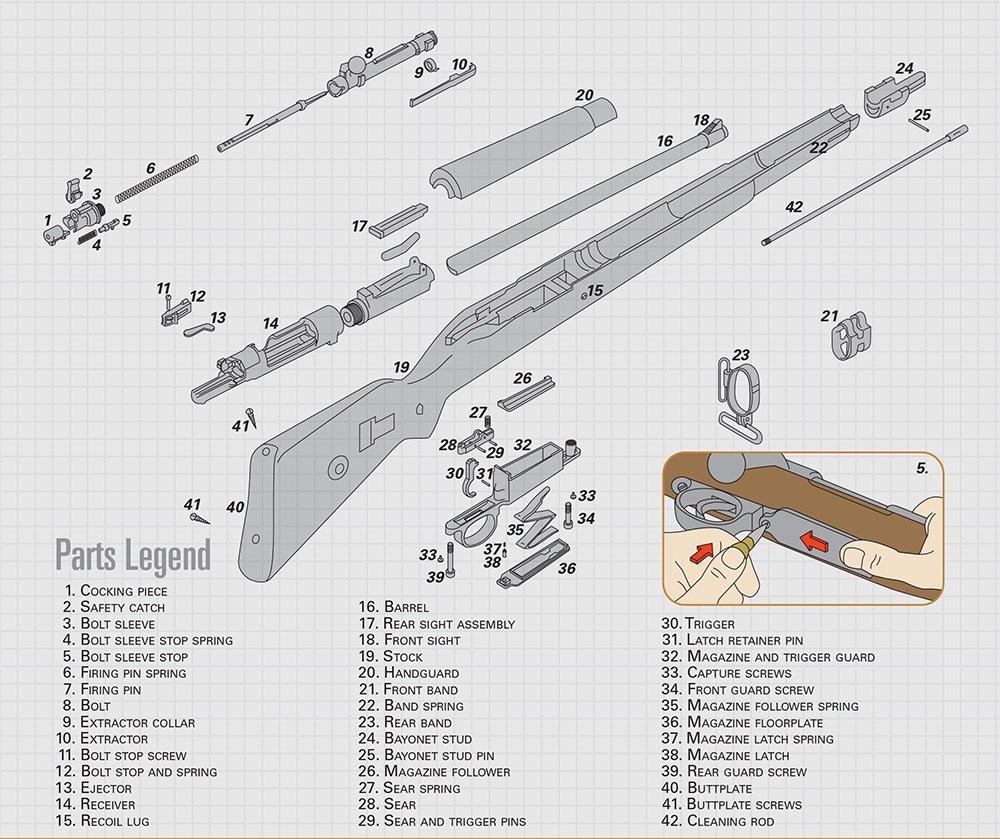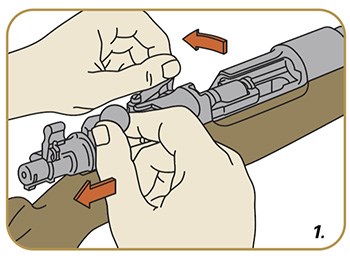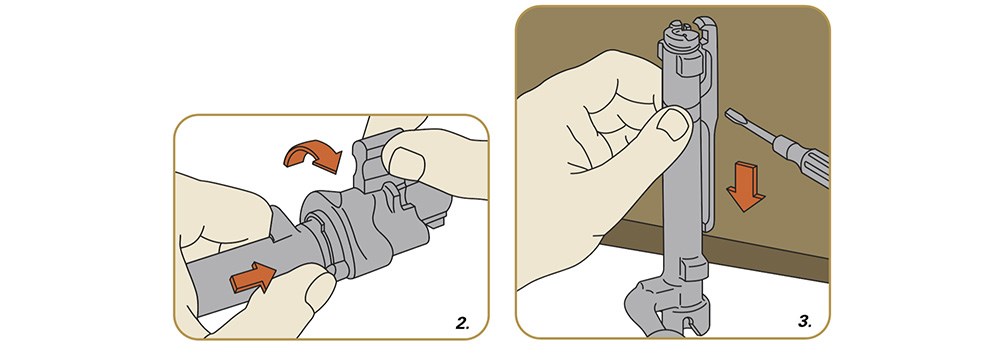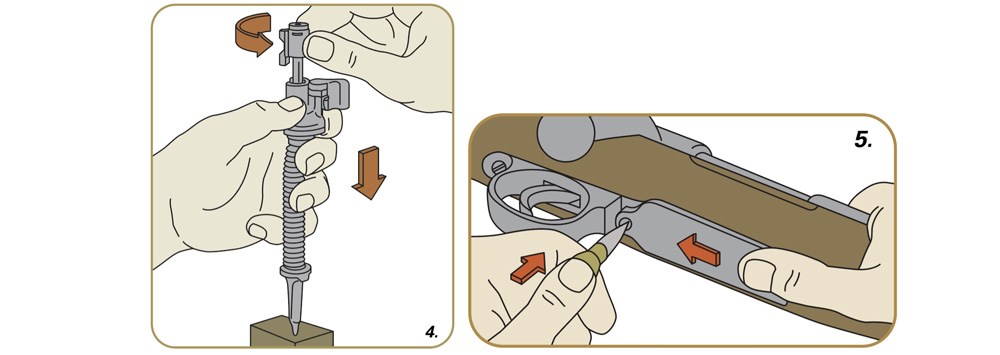Germany’s conflict with the Soviet Union represented a level of brutality not seen in the other areas of Europe during World War II.
Of all the German casualties suffered during the Second World War,
nearly 65 percent came in the fight against Russia. Combat on the
Eastern Front proved to be an unrelenting meat grinder of men and
machines.
Just like every invader before them, the Germans found themselves
swallowed up by the vastness of the Russian landscape. With every meter
the Wehrmacht
advanced, their supply lines seemed to grow exponentially longer. The
Soviet partisan groups gained strength and efficiency; meanwhile, the
Germans struggled to maintain security in their occupied territory.
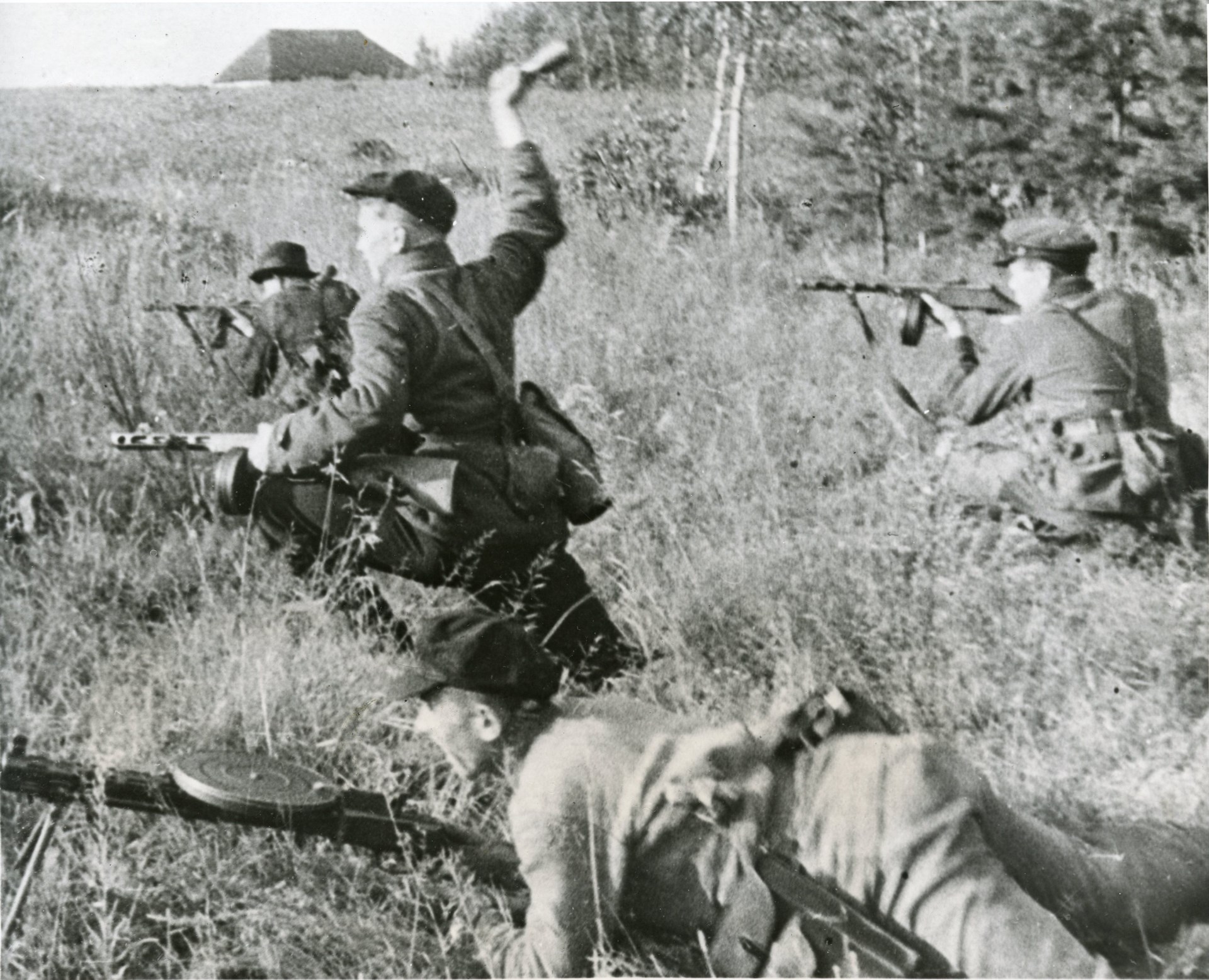 Soviet partisans with a DP-27 LMG and the ubiquitous PPSh-41 SMG. Author's collection
Soviet partisans with a DP-27 LMG and the ubiquitous PPSh-41 SMG. Author's collection
Planned Partisan Resistance
Although the Soviets
never expected to suffer such losses in men, equipment and territory
during the German invasion of June 1941, there were still plans in place
to combat the Nazi advance with irregular groups of resistance fighters
in the remote areas behind German lines. The partisan bands that formed
in the early days of the invasion gathered their initial supply of
small arms from the edges of the massive battlefields and from the Red
Army stragglers who appeared in small groups.
In the early days of the partisan war, most Soviet units used small arms typically found in Red Army service during 1941. Automatic guns were in short supply, and ammunition was always quite limited.
 The People's War: The very old and the very young served in the Soviet resistance; many carried the M1891 Mosin-Nagant rifle. NARA
The People's War: The very old and the very young served in the Soviet resistance; many carried the M1891 Mosin-Nagant rifle. NARA
On some occasions, the larger partisan groups were headed by Soviet
army officers. These units gained access to hidden firearms, ammunition
and equipment that the Red Army had left behind. The 11th Kalinin
Partisan Brigade is even said to have had several tanks that had been hidden in the forests
east of the Latvian border. Heavy weapons could rarely be kept in
action for long, though, as the partisans lacked fuel, spare parts and
ammunition. Traditional Russian frugality meant that the partisans would
dig up Soviet mines and re-use them in their intended role or strip out
the explosives for other demolitions. Dud artillery rounds were also
recovered and used for improvised mines.
In the first phase of the war in Russia, many of the partisan groups
were simply fighting for their own survival. Almost 40 percent of the
Soviet population lived in territory occupied by the Germans and, in
many of these areas, the Soviet commissars had abused the local
populations so badly that the people greeted the Germans as
“liberators.” The German high command never understood or appreciated
this early advantage. A 1956 U.S. Army study titled “The Soviet Partisan
Movement 1941-1944” remarked:
… poor treatment of the Russian
civilian population by German political leaders created resistance
instead of maintaining and exploiting the advantage of the initial
confidence displayed by many elements of the population.
Even so, during 1941-42, the eastern European population was
generally unsympathetic to the Soviet partisan cause. The situation grew
worse when partisans attempted to deprive locals of their limited food
supplies.
German Brutality Drives Partisan Support
The
Germans did not consider the Soviet partisan groups to be “military
units.” Consequently, they were defined as “bandits” or “terrorists,”
and no quarter was given to partisans or anyone believed to be helping
them. This was an important turning point in the war in Russia. Hitler’s
attitude towards the partisans, and most people in Eastern Europe, is
summarized in this passage from “Primordial Violence: German War on
Soviet Partisans” by Maj. Gus Costas, USMC (Ret.): “Hitler’s
personal enmity and hatred were apparent when he declared that the
anti-partisan effort was simply an opportunity ‘to eliminate anything
that opposes us,’ and to ‘shoot dead anyone who even looks at us
askance.’”
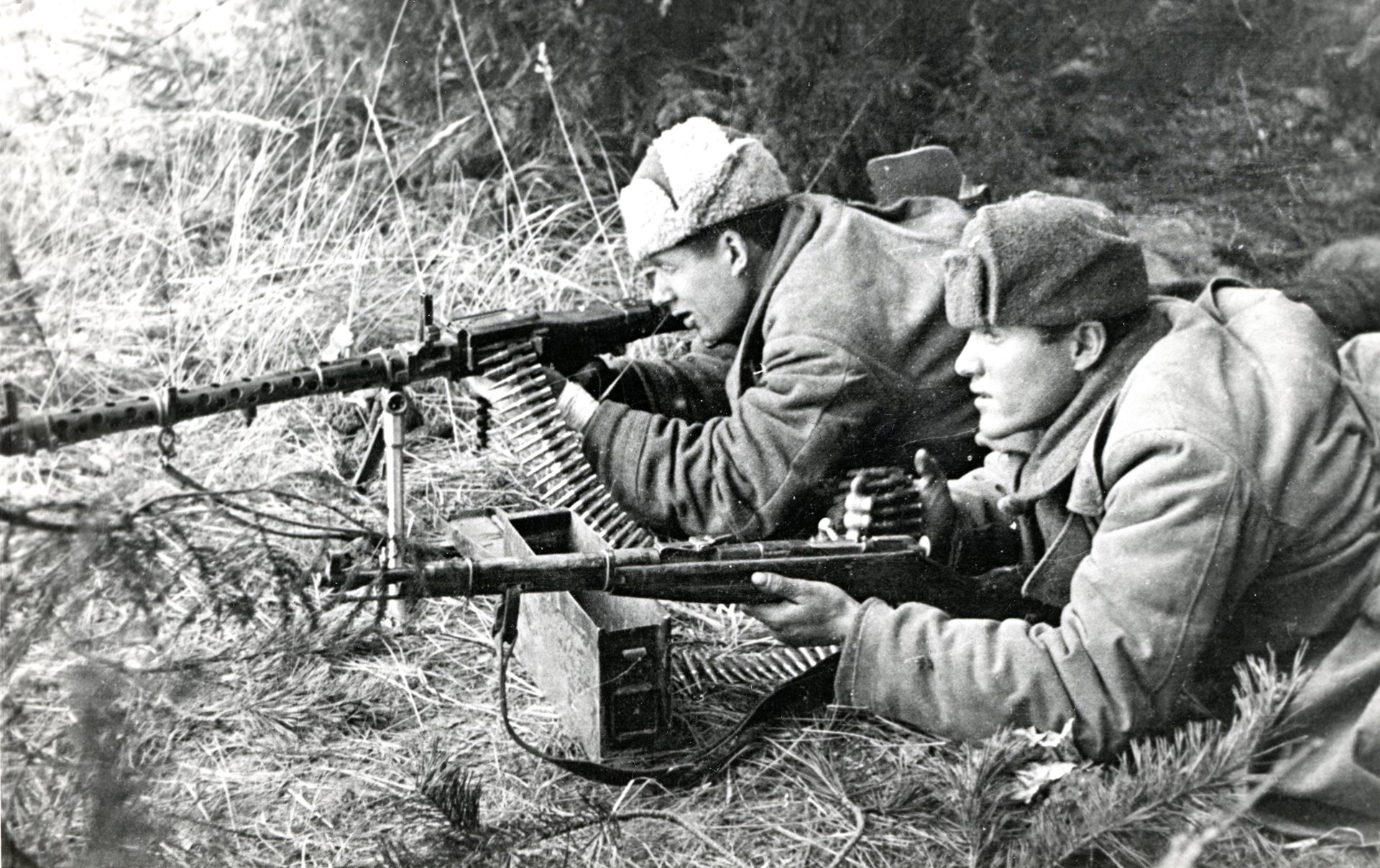 Captured
firearms played an important role. Shown here, a German MG34 supports a
partisan attack. The man alongside has a Mosin-Nagant Model 38
carbine. Author's collection
Captured
firearms played an important role. Shown here, a German MG34 supports a
partisan attack. The man alongside has a Mosin-Nagant Model 38
carbine. Author's collection
Strength & Experience
The territory behind
German lines represented a massive landmass, so the Soviets sought to
create as great a disturbance as possible in the Nazi rear areas. In
“The Soviet Partisan Movement 1941-1944” (DA-PAM 20-244, August 1956),
Soviet “by-hook-or-by-crook” methods of recruiting members for partisan
bands as war went on are described:
Manpower for the bands continued to
be drawn from a variety of sources. Escaped prisoners of war still
drifted into the partisan ranks, while German occupation policies caused
many civilians to volunteer. But by and large, as the movement
expanded, the larger proportion of the personnel was drafted from the
native populace, forcibly when necessary.
The Central Staff constantly advised
the lower echelons to foster the best possible relations with the
natives as a means of facilitating such recruiting. In some areas
recruits were taken systematically by age groups, and at times even
women were drafted.
Special attention was paid to
recruiting members of the “Komsomolsk,” the communist youth
organization. These young Bolsheviks were highly desirable as combat men
or political activists because of their fanaticism.
In partisan-dominated areas recruits
were put through a training course. Generally, they spent several weeks
on probation to prevent escape or defection of those forcibly drafted
and to give attached NKVD (precursor to the KGB) agents an opportunity
to check their backgrounds against the possibility of infiltration of
agents in German pay. Through informants within the units the commissars
also kept a constant check on all personnel. Desertions of individual
partisans were reported to the Central Staff, and their families, if
they could be reached, were sent to labor camps in Siberia. If a
defector was apprehended, the NKVD both passed and executed sentence. In
a number of cases, the NKVD terrorized German collaborators into
double-dealing by forcing them under threat of death to sign oaths of
loyalty to the Soviet regime and then threatening to have the oath
delivered to the occupation authorities should the individual fail to
cooperate with the partisans.
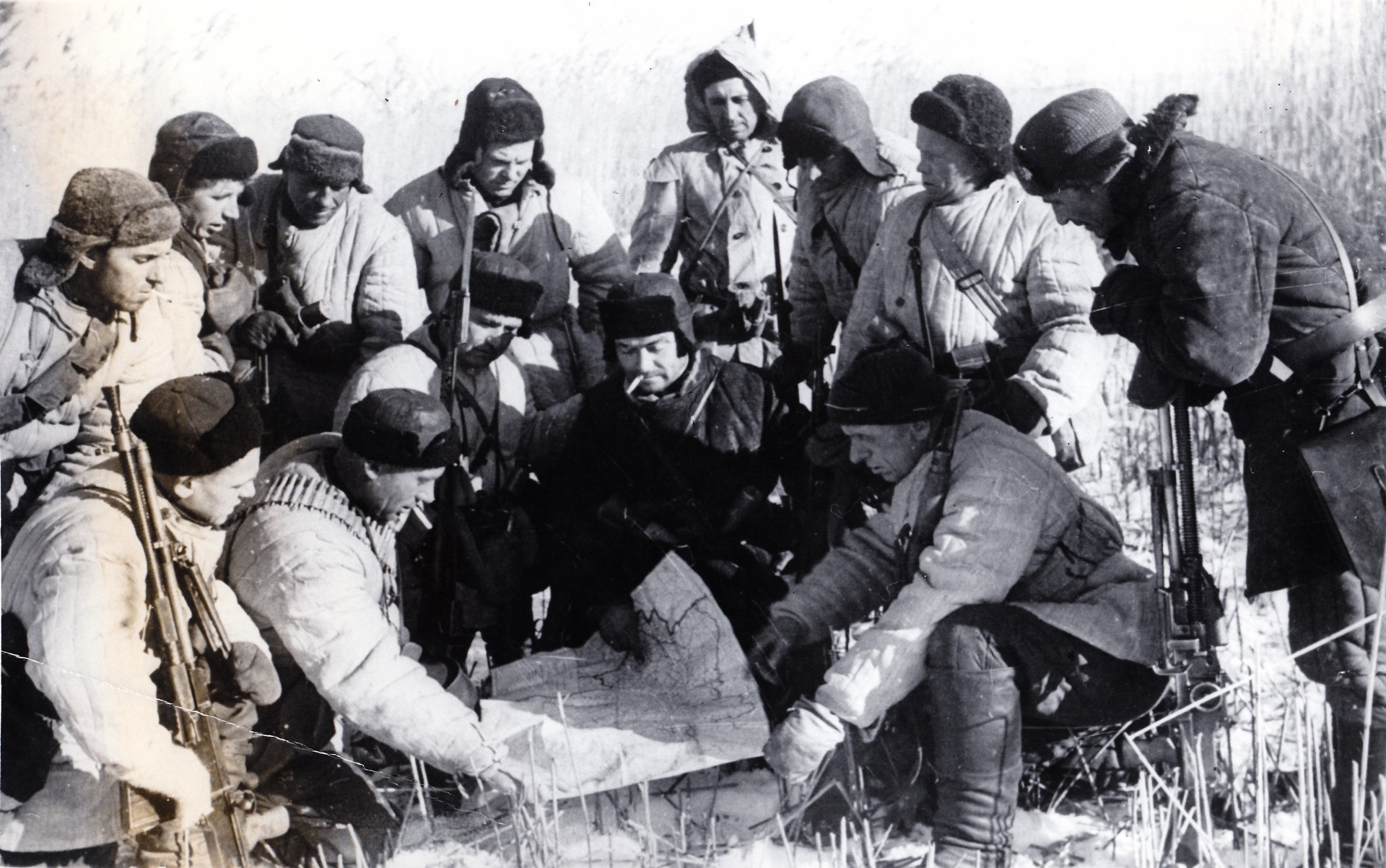 This partisan group appears to be made up of a more uniform Red Army unit. Note the Czech ZB26 LMGs (7.92x57 mm). NARA
This partisan group appears to be made up of a more uniform Red Army unit. Note the Czech ZB26 LMGs (7.92x57 mm). NARA
The Red Air Force
In 1962, the US Air Force Research Studies Historical Institute produced “Airpower and Russian Partisan Warfare” written by General der Flieger
D. Karl Drum. General Drum had first-hand knowledge of the Soviets’
efforts to supply partisan bands by air. He describes the effectiveness
of the Red Air Force in this role:
Without the regular system of air
transport established by the Red Air Force, the Soviet partisan bands
could not have been organized, maintained, and controlled to any
effective degree.
The Germans, of course, became
increasingly aware of the vital role of airpower in partisan operations.
The German Air Force could not spare the necessary aircraft, nor did it
possess on the Eastern Front sufficient warning and communications
equipment to make its efforts effective.
Without air transport, it would have
been impossible for the Russians to supply the partisans with weapons
and ammunition. Air lifting these items over the battle front was the
primary mission of the air transport supply system.
Communications was another critical component in the partisans’ success. General Drum continues:
Along with the messenger service,
radio equipment was indispensable for transmitting partisan intelligence
information and orders both for intra-partisan liaison and with
communication with the Central Command in Moscow.
Electric power plants (for radios),
batteries, receiving and sending equipment, and spare parts, could only
be supplied in quantity from the Zone of the Interior by airlift. Often,
specially trained radio operators were airlifted or parachuted into the
partisan areas.

Likely another Red Army-partisan group operating behind the lines, equipped with M1891 rifles, PPSh-41 SMGs and a DP-27 LMG. Author's collection
Partisan Targets
Beginning in 1943, there was far
more coordination in the partisans’ efforts and more strategic
direction in their attacks. The Soviet Central Staff issued a directive
that designated the priority of partisan targets. Primary targets were
rail lines and rolling stock, as well as road bridges and German
transport vehicles. Additional targets were German communication lines
and supply depots. It is important to note that Soviet partisans were
directed to take aggressive action in force against German units only
when the resistance groups had significant superiority in numbers. The
partisans rarely had enough ammunition to remain competitive in an
extended firefight.
The U.S. Army study titled “Rear Area Security in Russia: The Soviet
Second Front behind the German Lines” (Department of the Army Pamphlet
20-240), described the progression of the armament of their supply
troops as the war in the East progressed:
At the beginning of the Russian
campaign the crews of Germans supply trucks had small arms, but no
machine guns. Later on, after truck convoys had been helplessly exposed
to surprise fire and partisan raids, they were issued machine guns which
were mounted on the platform of one-half to one-ton trucks. At a still
later stage of the campaign the trucks were lightly reinforced with
armor plates. Shortage of personnel, however, precluded the use of
special machine gun crews and placed an additional burden on the supply
troops. On every trip the relief driver had to sit behind the machine
gun, ready to fire, while the rest of the convoy personnel was
constantly on the alert against surprise attacks. Soldiers returning
from furlough were sometimes collected at security strong points along
the roads and employed as escort personnel for supply convoys moving up
to the front.
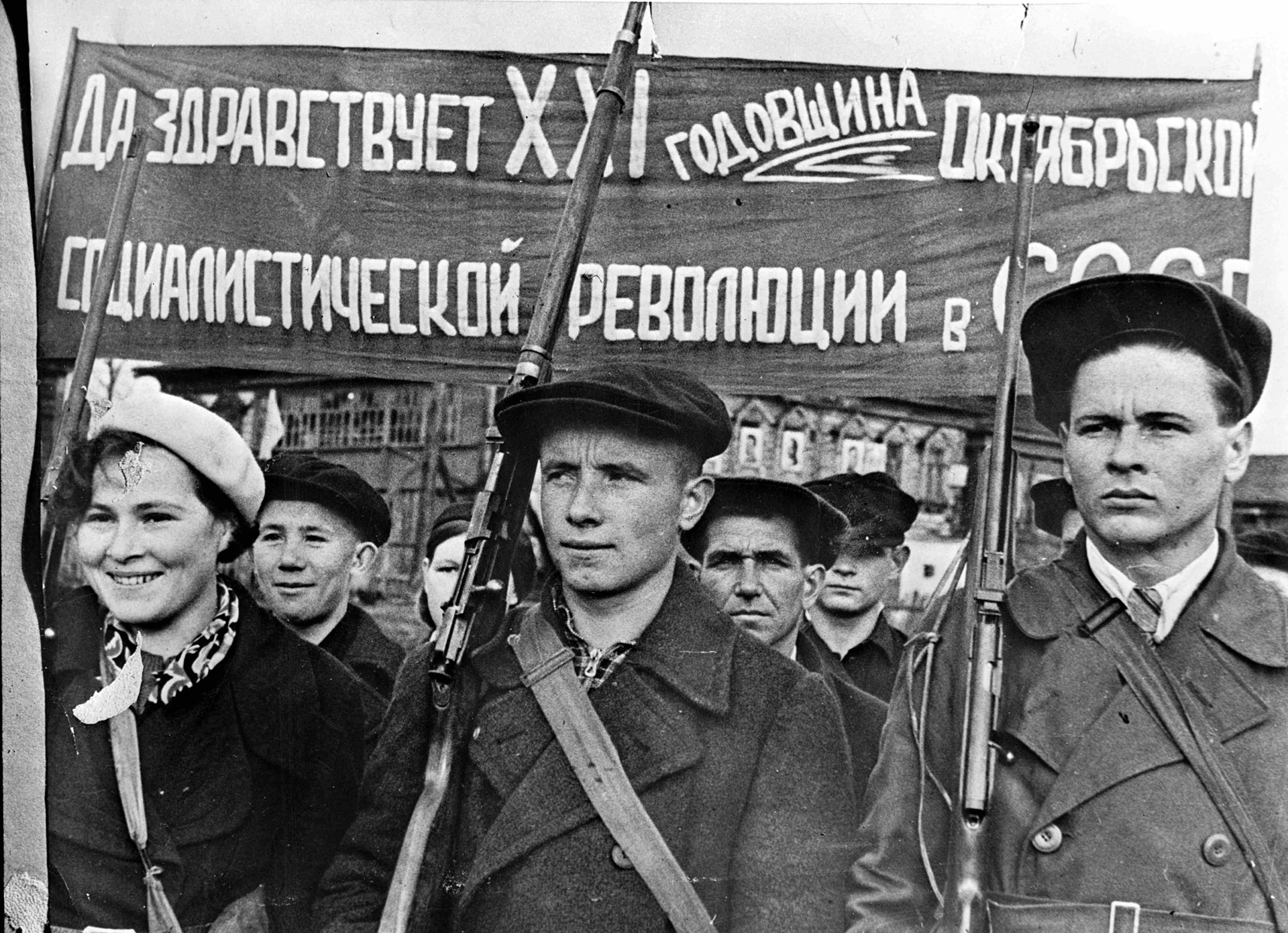
Resistance
units sprang up in the country, in the towns and in the factories.
Here, a man on the right carries a single-shot, .22-cal. TOZ-8 Cadet
Rifle. NARA
Arms Of The Partisans
While many photographs show Soviet partisans using captured German small arms (particularly the MP40),
these images were often staged propaganda tools created at the
direction of the Soviet Central Staff. The use of captured guns stressed
the partisans’ logistics, demanding the stockpiling of enemy ammunition
and spare parts. After 1942, the expanding size of the partisan groups
ultimately required the use of Soviet-made small arms. Even so, captured arms like the MP40, the MG34, the Karabiner 98k rifle, and any type of German pistol were used to supplement partisan firepower.
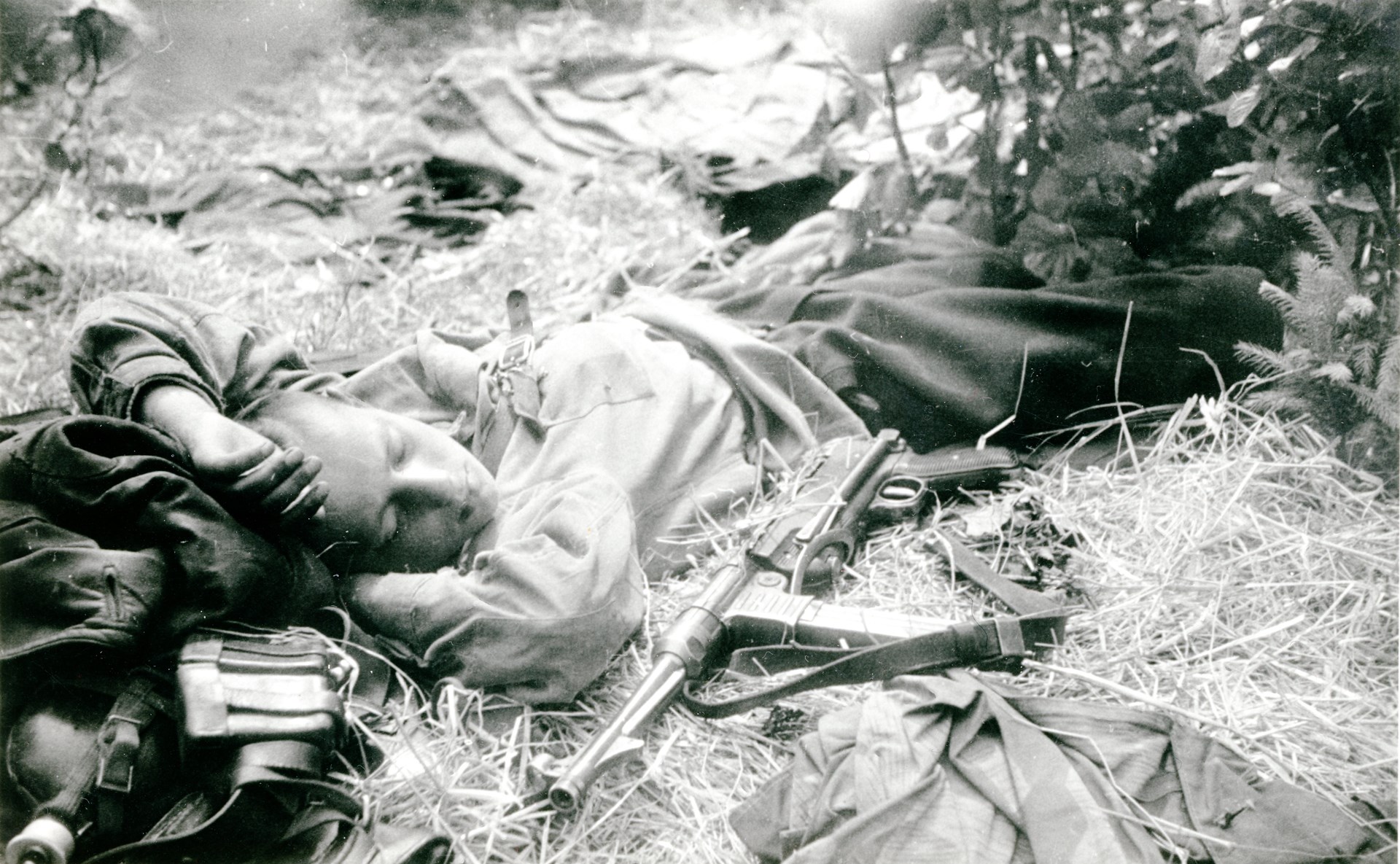
The German MP40 9 mm SMG was a popular firearm in any resistance group in Europe. Author's collection
PPSh-41
Like most resistance formations, Soviet partisans made extensive use of submachine guns (SMGs). Luckily for the Russians, they were armed with the PPSh-41
(7.62x25 mm Tokarev), easily one of the finest SMGs of the war. The
fast-firing PPSh cycled at nearly 1,000 rounds per minute, providing the
partisans with a distinct firepower advantage in close-range
firefights. The PPSh-41, called “Papasha,”
by fighters, used either a 71-round drum or a 35-round box magazine.
Simple and sturdy, it became an icon of Soviet resistance in World War
II.
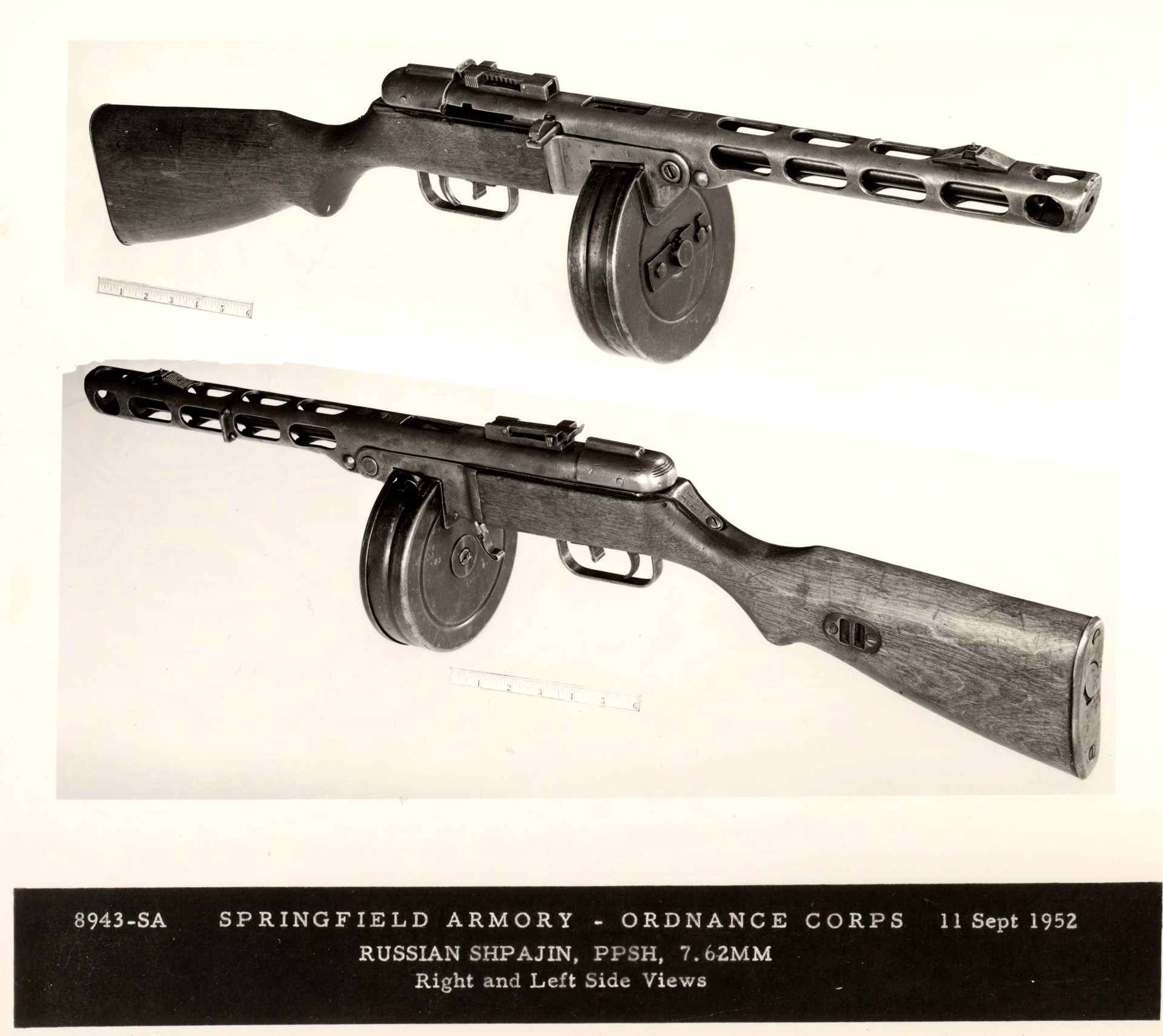 The
partisan's best friend, the PPSh-41 SMG equipped with a 71-round drum
magazine. The simple PPSh offered tremendous short-range firepower. Springfield Armory
The
partisan's best friend, the PPSh-41 SMG equipped with a 71-round drum
magazine. The simple PPSh offered tremendous short-range firepower. Springfield Armory
Mosin-Nagant Rifles
The venerable Mosin-Nagant M1891
(7.62x54 mm R) gave Soviet partisans a simple, reliable and accurate
rifle for the light infantry makeup of their groups. One of the classic
military bolt-action rifles, the M1891 served from before World War I, through both world wars, and even into the early years of the Cold War. From 1942, greater numbers of M91/30 sniper rifles became available, and Soviet marksmen used them to great effect. Equipped with a 3.5X PU scope, the M1891 was accurate
out to nearly 900 yards, just right for a partisan sniper with his
sights set on a German officer, truck driver or locomotive conductor.
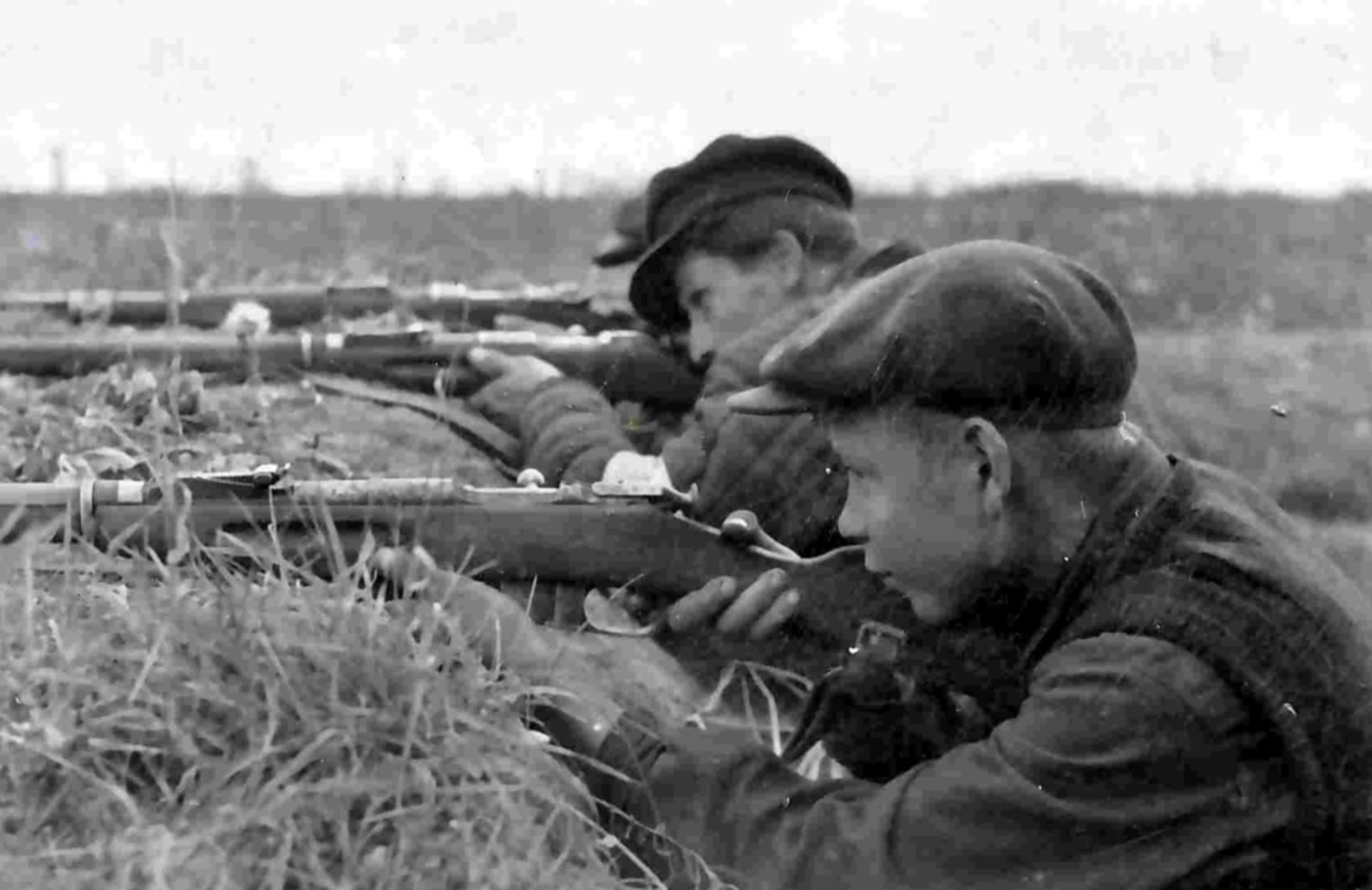 Total war on the Eastern Front knew no age limit. Shown here, a youthful partisan sights his M1891 Mosin-Nagant rifle. NARA
Total war on the Eastern Front knew no age limit. Shown here, a youthful partisan sights his M1891 Mosin-Nagant rifle. NARA
The Degtyaryov DP-27
The gas-operated DP-27
(7.62x54 mm R) gave partisan groups an effective base of mobile
firepower. With just about 80 parts, the DP light machine gun (LMG) was
simple enough for quickly trained partisan gunners. The DP-27 weighed 25
lbs. loaded, featured a folding bipod and a built-in flash hider.
Rugged and practical, the DP-27 offered a manageable cyclic rate at 550
rounds per minute and was considered highly reliable—earning the
nickname “Record Player” for its unique 47-round pan-shaped magazine.
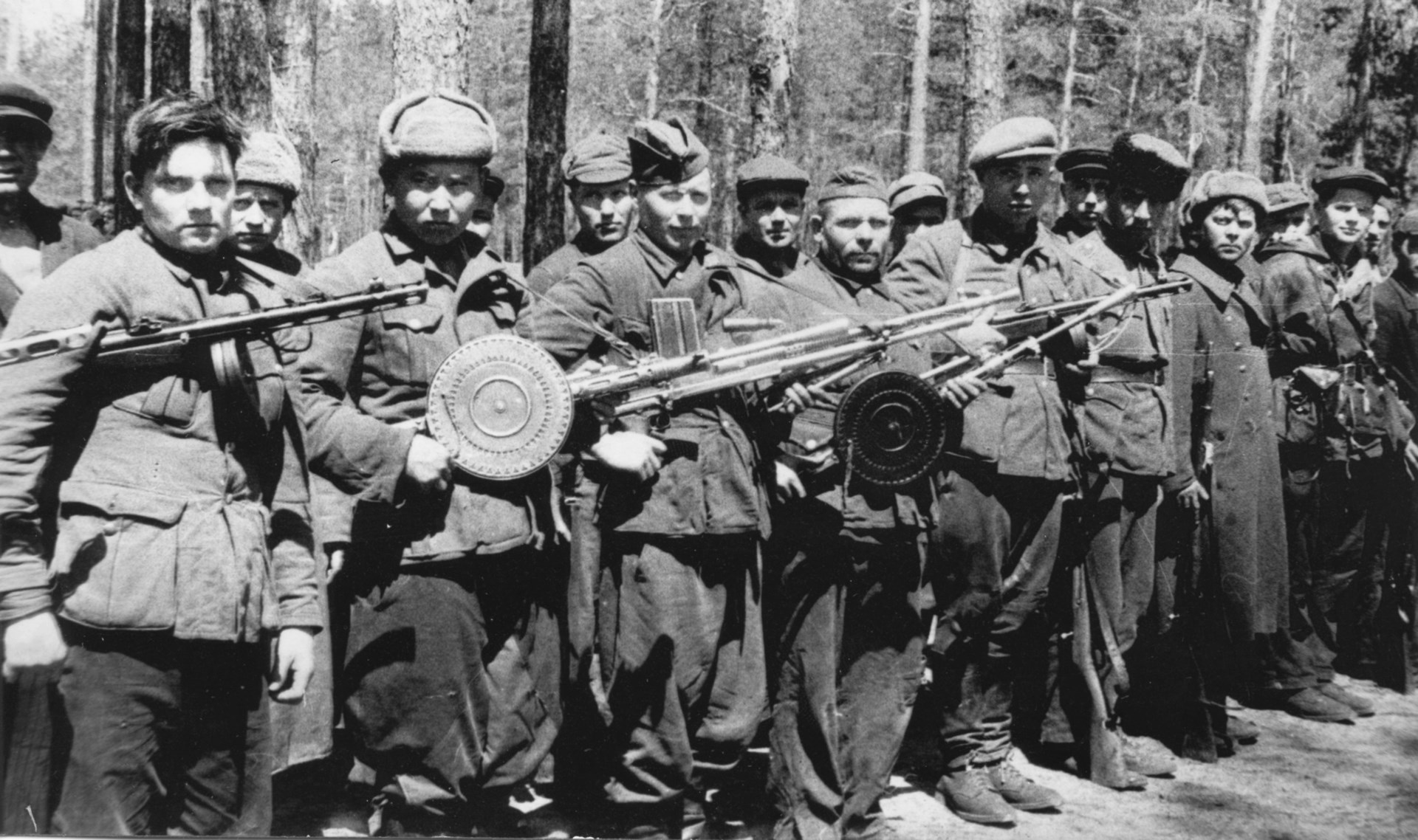
There's plenty of firepower in this guerrilla band, with DP-27 and ZB26 LMGs to support the rifles and SMGs. Author's collection
The PTRD-41 Anti-Tank Rifle
During World War II, the Red Army made significant use of a firearm that was considered “obsolete” by the Western Allies—the anti-tank (AT) rifle. Despite Western misunderstanding, the Soviet 14.5 mm PTRD-41 (single shot) and PTRS-41 (semi-automatic) rifles proved to be effective throughout
the war when used against the side/rear armor of German medium tanks,
assault guns and all lightly armored vehicles. The PTRD-41 was 79 ½”
long, weighed 38 lbs., and its 14.5x114 mm rounds could penetrate up to
40 mm of armor at 100 meters. It is important to note that an
experienced AT rifleman could hit the most sensitive points on an enemy
vehicle and often achieve a “mobility kill.” Once immobilized, the
armored vehicle was often assaulted with satchel charges and Molotov
cocktails. While Soviet partisans avoided encounters with German armor
whenever possible, the 14.5 mm AT rifles were excellent long-range
sniping arms against some of their most lucrative targets—German supply
trucks and railroad transports. Also, in many areas under partisan
control, the German second-line troops used lesser armored vehicles
(often French tanks captured in 1940) that were more vulnerable to
anti-tank rifle fire.
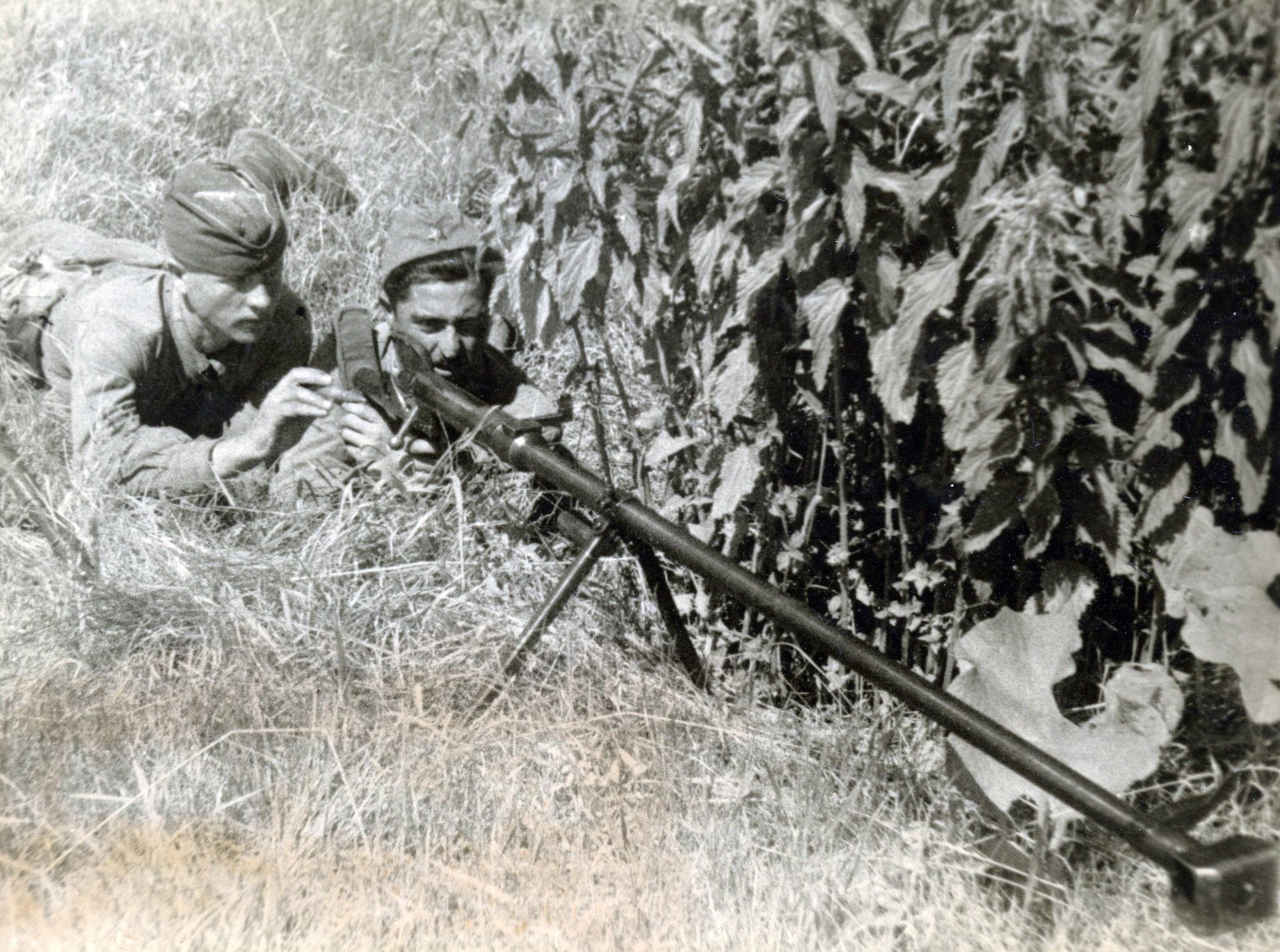
The
Soviet PTRD-41 14.5 mm anti-tank rifle gave Soviet partisans a measure
of anti-tank capability, along with powerful sniping and long-range
bunker-busting ability. NARA
Mines & Explosives
The pamphlet “Rear Area Security in Russia” describes the Soviet partisans deadly use of mines and explosives:
Daily interruptions of traffic were
caused by rail demolitions for which the Russians used various types of
mines. Pressure and vibration-type mines were placed in the track, to be
detonated by the locomotives. To destroy particularly valuable
supplies, such as gasoline in tank cars, the partisans used mines with
pull-type fuses which were set off by remote control. Retreating Russian
forces often buried mines with long-delay fuses, under the tracks where
they might blow up as much as three months later. Mines with simple
delay-type fuses were also employed to avoid hitting the protective cars
ahead of the locomotive. In order to escape the mine detectors, nearly
all of these mines were placed in wooden containers, and their
construction was of the most primitive type; some of them consisted of
no more than a small package of explosives with a safety fuse.
Occasionally, even magnetic mines were used. They served as means of
sabotage in workshops and on standing trains and were mostly equipped
with delay-type fuses.
Ultimately, using what firearms and supplies they could scrounge, the
Soviet partisans played a vital role in hampering the German war
machine until the Red Army could begin turning the tide on the Eastern
Front. Today, most of the credit is given to the Red Army for Russia’s
victory in the so-called Great Patriotic War, but the partisans did
their job, too, often without the support or direction given to regular
army troops.
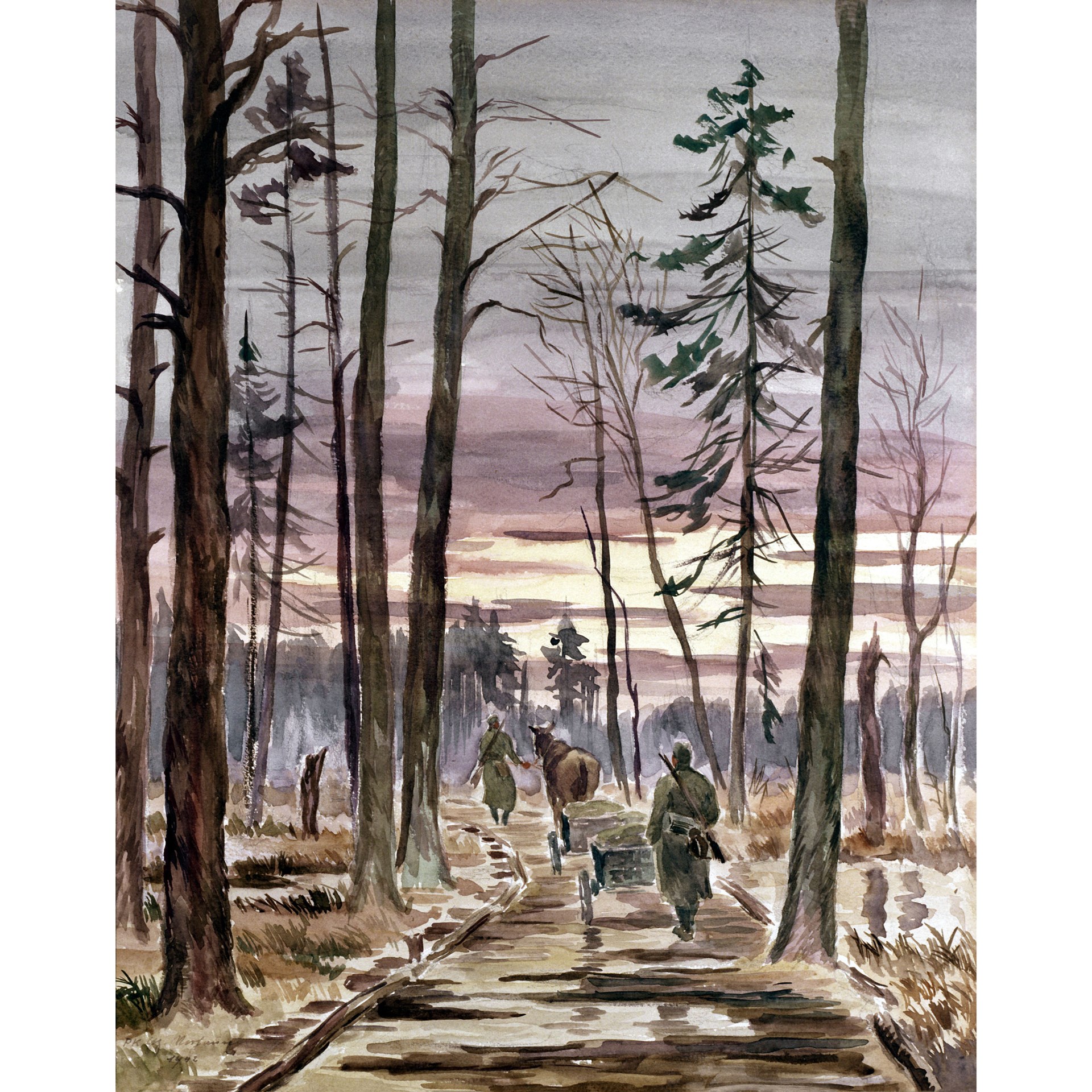
From
a German wartime painting by G. Vorhauer, in the US Army Artwork
Collection, the perfect environment for ambushes: Germany’s supply lines
in Russia were long, lonely and difficult to defend. NARA


































